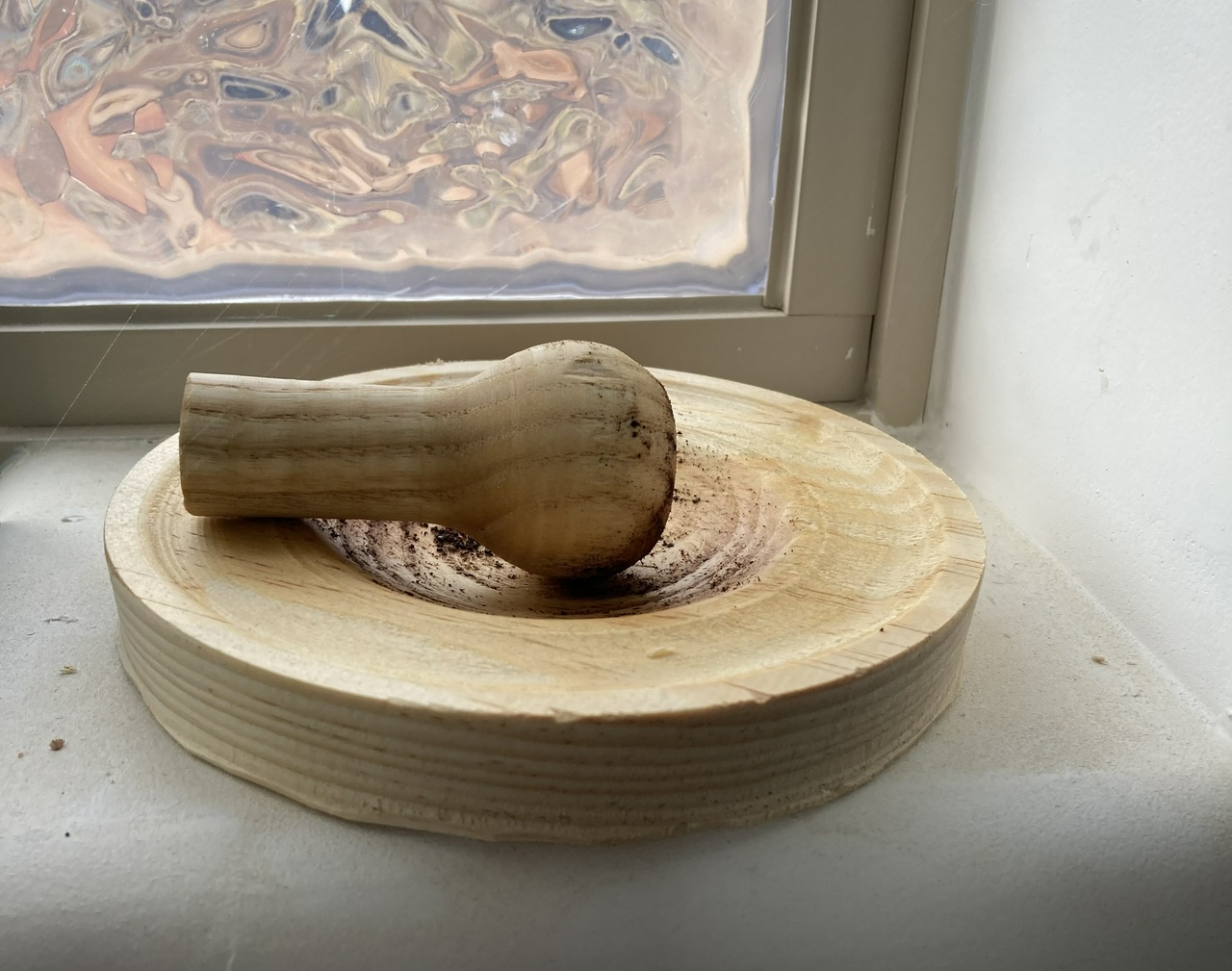I moved in 2019, and it was going to be spring of 2020 before I had a shop, so I decided to build a shave-horse / bowl horse as a way to keep busy and be able to do some woodworking.
The first step was building the horse itself. A couple 4×4s, a 2×8, and a couple 2×4s. I bought the fake redwood pressure-treated stuff at Homer Depot because it was the straightest of the various tubas they had. Course it was basically saturated with water, so it's interesting watching it move as it dries out in the desert air here.
Anyway, I sandwiched the front leg between the two 4×4s, with a piece of 2×4 on either side of it. Pounded some 5/8” dowel into 5/8” holes drilled in the wet wood with an auger bit, and as the wood dried, the holes tightened down around the dowels nicely. No glue or fasteners on that joint.
Next was using my branch saw and a chisel to make mortises for the rear legs. I eyeballed the angles. They feel about right. The legs are screwed on with deck screws.
Finally, I shimmed the bench level, and then trimmed the legs a given height from the floor. Ended up taking a couple inches off every leg, but got the bench sitting level. Then I made a seat.

Then it was time to build the bowl head. I took a couple pieces of 2×8, and sandwiched pieces of 2×4 vertically between the ends of them, and screwed them together with more deck screws. Then I drilled a hole in each 2×4 just below where it stuck out below the bottom of the bench, and carved a wedge by hand to fit in that hole. With both wedges in place, the bowl head is locked to the horse very securely.
I screwed a couple chunks of 2×4 to the back of the bowl head. This forms the stationary part of the clamping mechanism. I'll probably tweak the shape later, but the deck screws come out pretty easy, too.
Then I made the clamp. It's a 2×4, shaved down a little so it will fit freely between the sides. I made a platform for the bottom of it by cutting a 2×4 mortise into a piece of 2×8 and putting in a 9/16 hole. A half-inch carriage bolt slides through to hold the platform on. Then I set the clamp in place and drilled a hole through everything so it could pivot. When I determined that my hole was the right height, I added a couple more holes so I can work on different sized parts.



And there it is. I didn't carve any bowls on it, but it was handy for holding all kinds of projects before the shop got built.
Contents
#woodworking #tools
Discuss...
Reply to this in the fediverse: @davepolaschek@writing.exchange
































